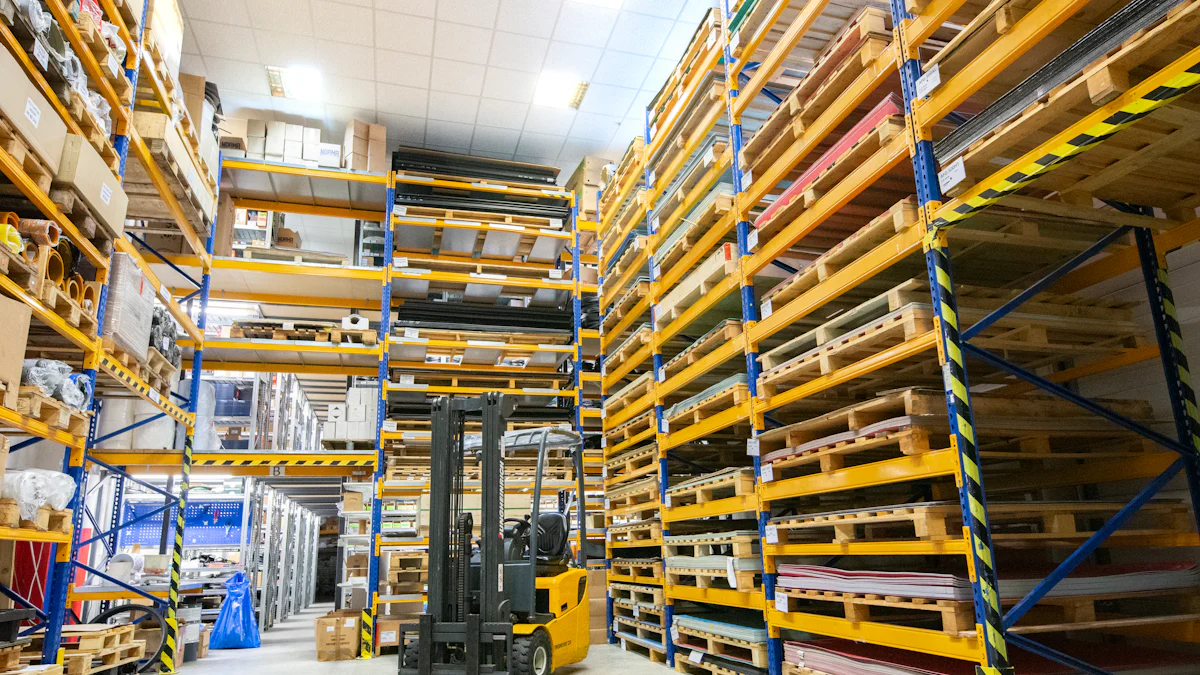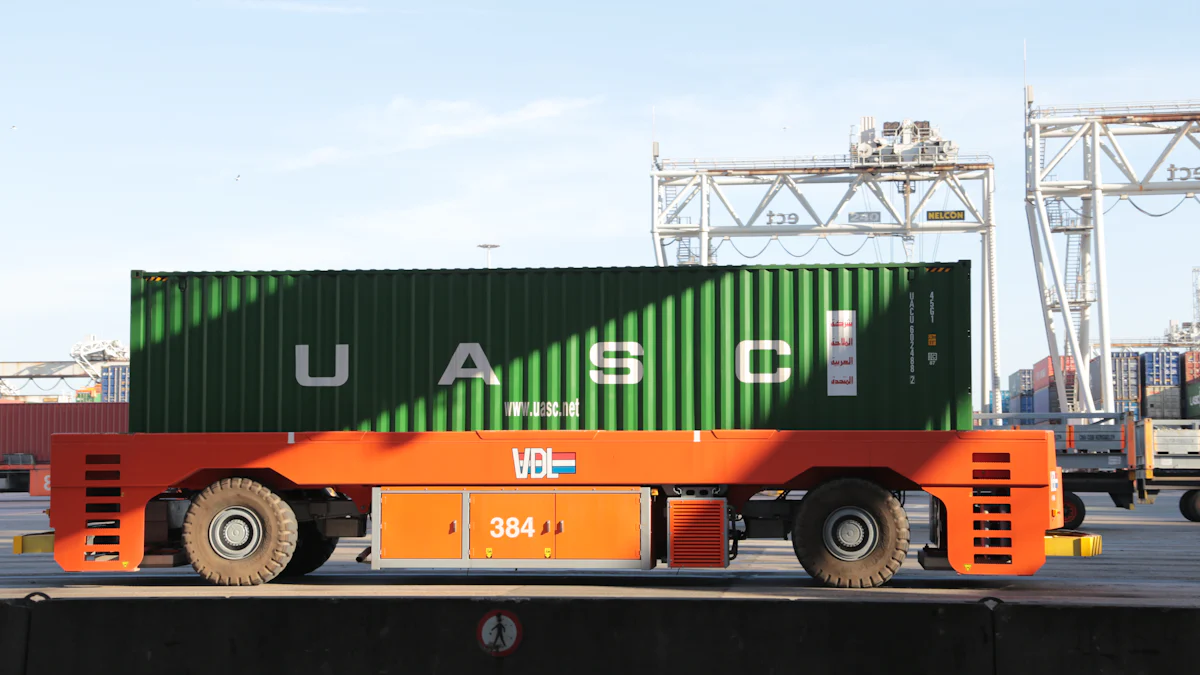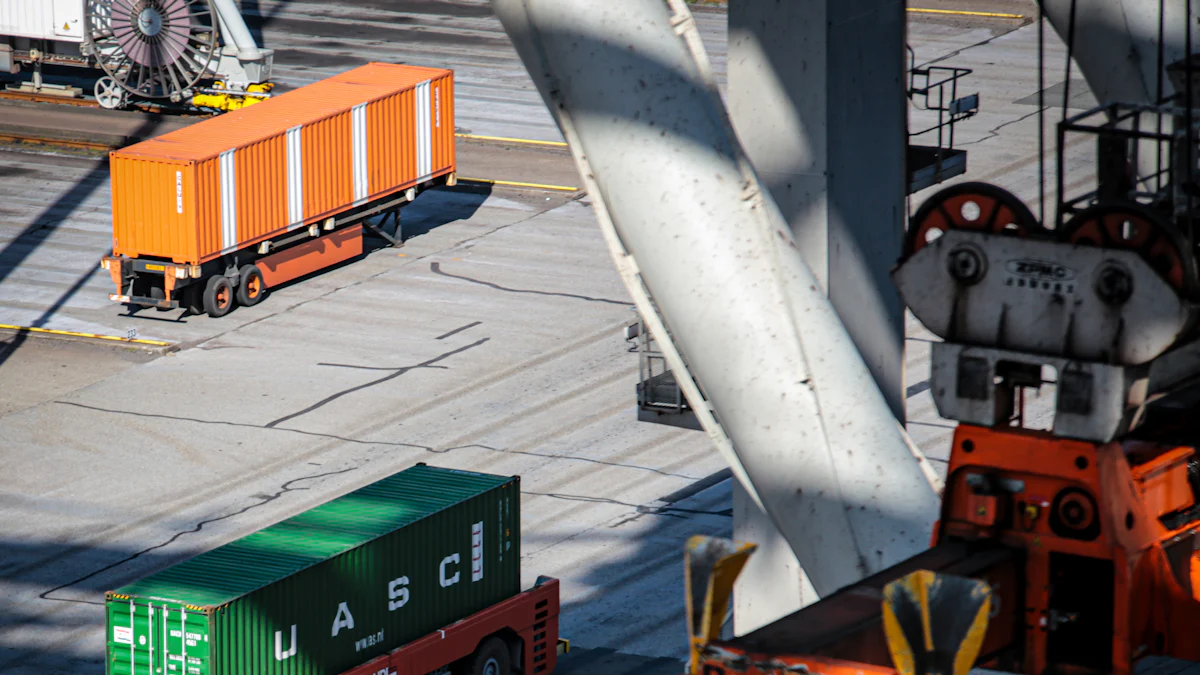The Future of Material Handling: The Role of AGVs in Modern Warehouses

Material handling forms the backbone of modern warehouses. Efficient movement of goods ensures smooth operations and timely deliveries. Automated Guided Vehicles (AGVs) have revolutionized this process. AGVs transport goods within controlled environments without human intervention. Automation in warehouse operations has become crucial. The global warehouse automation market size was valued at $15.81 billion in 2022 and is expected to grow from $18.24 billion in 2023 to $57.38 billion by 2031, with a compound annual growth rate (CAGR) of 15.4% during the forecast period (2024-2031). AGVs streamline workflows, enhance productivity, and increase accuracy. JUSDA's intelligent warehousing system exemplifies these advancements by integrating mobile robots, robotic arms, and control systems.
Understanding AGVs
Definition and History
What are AGVs?
Automated Guided Vehicles (AGVs) represent a breakthrough in material handling technology. AGVs transport goods within controlled environments without human intervention. These vehicles use software and sensors for navigation, ensuring precise movement along predefined paths. AGVs enhance efficiency by reducing the need for manual labor and minimizing errors.
Evolution of AGVs in Material Handling
The first AGV appeared in 1953, introduced by Barrett Electronics. This innovation laid the foundation for more sophisticated AGVs. During the 1960s and 1970s, AGVs evolved into more complex vehicles. The introduction of microprocessors and computer technology significantly improved their capabilities. Throughout the 1970s, AGVs continued to advance, incorporating new types and smart floor technology. Today, AGVs play a crucial role in modern warehouses, exemplified by JUSDA's intelligent warehousing system.
Types of AGVs
Tow Vehicles
Tow vehicles serve as one of the primary types of AGVs. These vehicles pull carts or trailers loaded with goods. Tow vehicles excel in transporting large volumes of materials over long distances. They offer a cost-effective solution for moving heavy loads within a warehouse.
Unit Load Carriers
Unit load carriers handle individual units or pallets of goods. These AGVs transport items directly to specific locations within the warehouse. Unit load carriers ensure accurate placement and retrieval, enhancing inventory management. Their precision reduces the risk of damage to goods.
Forklift AGVs
Forklift AGVs replicate the functions of traditional forklifts. These vehicles lift and transport pallets, making them ideal for stacking and retrieving goods from high shelves. Forklift AGVs improve safety by eliminating the need for human operators in potentially hazardous situations.
Hybrid AGVs
Hybrid AGVs combine features from different types of AGVs. These versatile vehicles adapt to various tasks within the warehouse. Hybrid AGVs handle both towing and lifting operations, offering flexibility in material handling. Their adaptability makes them suitable for dynamic warehouse environments.
Applications of AGVs in Modern Warehouses

Material Transport
Inbound and Outbound Logistics
AGVs excel at automating warehouse processes. AGVs streamline inbound and outbound logistics by transporting goods efficiently. These vehicles handle the movement of raw materials to storage areas. AGVs also facilitate the transfer of finished products to shipping docks. This automation boosts throughput and reduces congestion in warehouses.
Internal Material Movement
AGVs support smooth internal material movement. These vehicles transport items between different sections of a warehouse. AGVs handle tasks such as moving components to assembly lines. This capability enhances flexibility and mobility within the facility. Businesses benefit from reduced manual labor and increased operational efficiency.
Inventory Management
Automated Storage and Retrieval Systems (AS/RS)
AGVs play a crucial role in automated storage and retrieval systems (AS/RS). These vehicles transport goods to and from storage racks. AGVs ensure precise placement and retrieval of items. This accuracy minimizes the risk of damage and improves inventory management. JUSDA's intelligent warehousing system exemplifies this integration, enhancing overall efficiency.
Real-time Inventory Tracking
AGVs enhance real-time inventory tracking. These vehicles work seamlessly with warehouse management systems (WMS). AGVs update inventory levels as they move goods within the warehouse. This real-time data ensures accurate stock levels and reduces discrepancies. Businesses gain better control over their inventory, leading to improved decision-making.
Order Fulfillment
Picking and Packing
AGVs optimize the picking and packing process. These vehicles transport items to designated packing stations. AGVs reduce the time required for manual picking tasks. This automation increases order fulfillment speed and accuracy. JUSDA's system uses mobile robots and robotic arms to further streamline these operations.
Sorting and Staging
AGVs improve sorting and staging activities. These vehicles sort items based on destination or priority. AGVs then stage the sorted goods for shipment. This process reduces errors and enhances workflow efficiency. Businesses experience faster order processing and improved customer satisfaction.
Advantages of Using AGVs

Operational Efficiency
Reduced Labor Costs
AGVs significantly reduce labor costs in warehouses. Automated Guided Vehicles handle repetitive tasks that would otherwise require human labor. This reduction in manual labor leads to lower operational expenses. Businesses can reallocate human resources to more strategic roles, enhancing overall productivity.
Increased Throughput
AGVs increase throughput by streamlining material handling processes. Automated Guided Vehicles move goods swiftly and accurately within the warehouse. This efficiency minimizes delays and bottlenecks. Enhanced throughput results in faster order fulfillment and improved customer satisfaction.
Safety and Reliability
Minimizing Human Error
AGVs minimize human error in material handling operations. Automated Guided Vehicles follow predefined paths with precision, reducing the risk of mistakes. This accuracy leads to fewer damaged goods and lower operational costs. Businesses benefit from consistent and reliable performance.
Enhancing Workplace Safety
AGVs enhance workplace safety by reducing the need for human intervention in hazardous tasks. Automated Guided Vehicles operate in controlled environments, minimizing the risk of accidents. This safety improvement leads to a healthier work environment. Employees experience fewer injuries and increased job satisfaction.
Scalability and Flexibility
Adapting to Changing Demands
AGVs offer scalability and flexibility to adapt to changing demands. Automated Guided Vehicles can be easily integrated into existing warehouse systems. This adaptability allows businesses to scale operations up or down based on demand. The flexibility of AGVs ensures efficient material handling in dynamic environments.
Integration with Other Systems
AGVs integrate seamlessly with other warehouse systems. Automated Guided Vehicles work in conjunction with warehouse management systems (WMS) and enterprise resource planning (ERP) systems. This integration enhances overall operational efficiency. Businesses achieve better coordination and streamlined workflows.
Technical Aspects of AGVs
Navigation and Guidance Systems
Laser Guidance
Laser-guided vehicles (LGVs) use laser sensors to navigate. These sensors emit laser beams that reflect off targets placed around the warehouse. The vehicle calculates its position based on the reflected signals. This method ensures high precision and reliability. LGVs can adapt to changes in the environment, making them suitable for dynamic warehouses.
Vision Guidance
Vision guidance employs cameras and image processing software. Cameras capture images of the surroundings. The software analyzes these images to determine the vehicle's location. Vision-guided AGVs can recognize obstacles and navigate around them. This technology enhances flexibility and safety in material handling operations.
Magnetic and Inductive Guidance
Magnetic and inductive guidance systems use magnetic strips or wires embedded in the floor. The AGV follows these magnetic paths to navigate through the warehouse. This method provides a cost-effective solution for fixed routes. Magnetic guidance ensures consistent and reliable navigation, ideal for repetitive tasks.
Power and Charging Solutions
Battery Technologies
AGVs rely on advanced battery technologies for power. Lithium-ion batteries offer high energy density and long life. These batteries provide consistent power, reducing downtime. Lead-acid batteries serve as an alternative, offering cost-effective solutions for less demanding applications. Both types ensure reliable operation of AGVs.
Wireless Charging
Wireless charging eliminates the need for manual battery swaps. Charging pads installed at strategic locations allow AGVs to recharge during idle times. This method ensures continuous operation without human intervention. Wireless charging enhances efficiency and reduces maintenance requirements.
Software and Control Systems
Fleet Management Software
Fleet management software coordinates the movement of multiple AGVs. The software assigns tasks based on priority and availability. Real-time monitoring allows for efficient route planning and task allocation. This system ensures optimal utilization of resources, enhancing overall productivity.
Integration with Warehouse Management Systems (WMS)
Integration with Warehouse Management Systems (WMS) streamlines operations. AGVs communicate with WMS to receive and execute tasks. This integration ensures accurate inventory tracking and efficient order fulfillment. Businesses benefit from improved coordination and reduced operational costs.
Product Information:
JUSDA's intelligent warehousing system integrates mobile robots, robotic arms, and control systems.
AGV/AMR utilizes automatic guidance devices like electromagnetic or optical systems.
AGV/AMR models include forklift and composite types for various scenarios.
AGVs represent a significant advancement in material handling technology. These vehicles enhance efficiency, safety, and flexibility in modern warehouses. Businesses can achieve cost reduction, quality improvement, and efficiency enhancement through the adoption of AGVs.
AGVs have transformed material handling in modern warehouses. These vehicles enhance efficiency, safety, and flexibility. Businesses benefit from reduced labor costs, increased throughput, and improved workplace safety.
Future advancements in AGV technology promise even greater benefits. Integration of AI, machine learning, and advanced sensors will make AGVs more intelligent and adaptable. Innovations in navigation systems and obstacle detection will improve precision and safety.
AGVs will continue to shape the future of material handling. Adopting AGVs will help businesses achieve cost reduction, quality improvement, and efficiency enhancement.
See Also
Automated Future: Advantages of High-Tech Manufacturing Warehouses
Boosting Efficiency: Understanding Robotic Automation in Warehousing
Path to Clarity: Digital Technology in Future Logistics
Harnessing Logistics Robotics: Boosting Warehouse Efficiency
